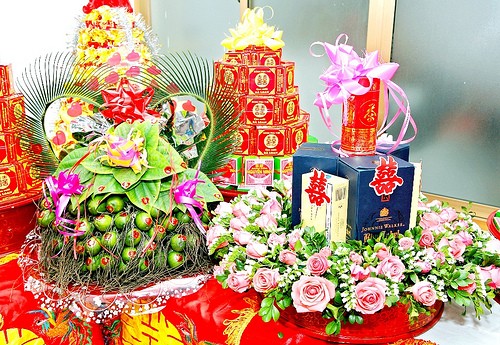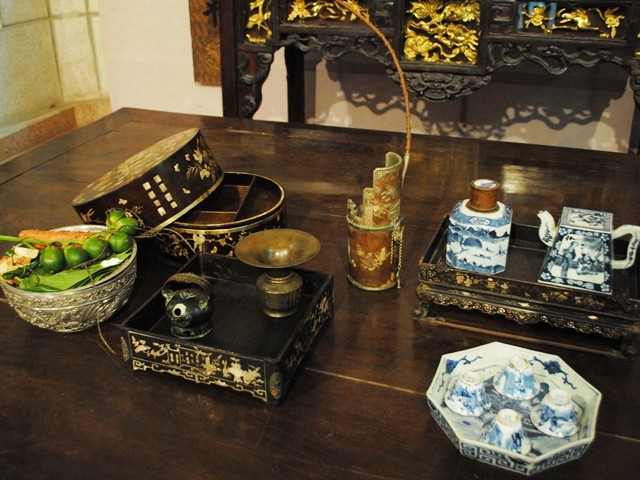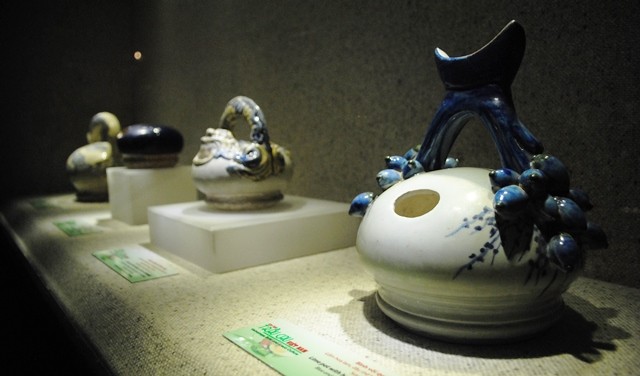(VOVworld) - In Vietnam, the custom of chewing betel dated back to the reign of the Hung Kings. It is associated with the “Legend of Betel and Areca” about a wife’s faithfulness to her husband and the love between two siblings. They are a symbol of love, brotherhood, family, and happiness.
History of chewing betel
Betel and areca have not only appeared in Vietnamese folklore, folk verses, folk songs, and folk festivals, but have become an indispensable part of Vietnamese people’s daily life. Betel and areca are used to start a conversation and help people become closer and more open with each other. They serve as offerings in important traditional ceremonies, such as offering rituals, engagements, weddings, funerals, and burials. Culture researcher Giang Quân says:
“The customs of chewing betel and areca nuts is connected to the ancient legend of betel and areca. Betel leaves and areca nuts are an indispensable part of the betrothal gifts of an engagement or wedding ceremony. The mixture of an areca leaf, betel bark, and hydrated lime makes the lips of those who eat it rosy.”
 |
| Betel and areca nuts are an indispensable betrothal gift during traditional weddings |
A betel kit
A betel quid consists of four materials: a wedge of areca nut which has a sweet taste, a betel leaf that offers a spicy taste, a piece of bark of a special tree which gives a bitter taste, and a little lime paste offering a hot taste. All of them are chewed together, providing a delicious taste with red juice and freshness. The tall areca tree symbolizes heaven (Yang). The lime symbolizes earth (Yin)
A betel kit includes a knife for splitting the areca nuts and shaping the betel leaves, a pot of lime, a tube of

A betel kit includes a knife, a lime pot, a tube of lime paste, a little stick used to spread lime paste on the betel leaf, and all exist in a great variety.
lime paste, a little stick used to spread lime paste on the betel leaf, and all exist in a great variety. There are also trays, containers, baskets, boxes, bags, and handkerchiefs to contain the betel, areca and small items. For elderly people with weak teeth, there is a little spatula and a mortar to pound the betel and areca. In the betel kit, the lime pot is an important and indispensable item. In the past, it was respected as a god, and was called “the Lime God.” Phạm Thị Là, a Hanoian, is now 70 years old and has maintained the habit for many years.
“I began to chew betel and areca nuts when I was 26 years old. The habit helped me relieve toothache and other mouth infections. Sometimes I even got blisters in my mouth from chewing too much betel. But it would get better after I drank some alcohol.”
Chewing betel in modern society
There aren’t any streets or markets which specialize in selling betel and areca nuts. Today only vendors from Hung Yen province or from outlying districts of Hanoi still offer the products. Thanh Tram has sold betel and areca nuts at Hang Be market in downtown Hanoi for more than 20 years.
“Betel and areca nuts grown in Nam Dinh and Hai Phong are now considered the best in the northern region. Few old people in Hanoi still retain the habit of chewing betel. Those who buy betel and areca nuts buy them for offering on the first or the fifteen day of every lunar month or for wedding ceremonies. On those occasions, I can sell hundreds of areca nuts. ”
It’s said that it’s easy to get blisters in the mouth or get drunk when you first chew betel. But when you are used to it, you can become addicted. At that point, a quid of betel is indispensable, according to Đoàn Văn Hùng of Cao Trung commune in Hanoi’s outlying district of Hoài Đức, who has 20 years of experience.
“Old people used to say that it’s better to peel off the green bark of areca but I learned on the Internet and heard through the media that although the bark is a bit hard, it makes the mouth fragrant, cools bad tempers, and makes digesting food easier. In the past I was a heavy smoker but now I’m addicted to chewing betel. Every day after a meal, I chew a quid of betel. In one day I can chew up to 20 quids of betel. When I must go out on business, I take a few quids along.”
 A lime-pot is an important and indispensable item in the betel kit.
A lime-pot is an important and indispensable item in the betel kit.
In the countryside, many old people still maintain the habit of chewing betel. Thus dark green betel vines with big, thick leaves twining around tall areca trees can still be seen in the gardens of rural households. Hùng explains:
“In my village, we still grow many areca trees as we still have much land. Betel trees should be grown on high ground, without acid, or too much sun. The tree will grow better if lime is put near its root. It’s similar for areca trees which should be planted on high ground and digging around its root is forbidden.”
Chewing betel used to be a very popular practice among people in all walks of life, from ordinary people to royalty and has become a beautiful characteristic of Vietnam’s traditional culture. It is a custom among the majority Kinh group, and also among other ethnic groups, such as the Tay, Nung, Dao, Thai, Muong and San Diu in the northern areas, the Khmer, Bru, Edu and Cham living along the Truong Son Range and in the Central Highlands, and the Khmer in southern areas. Though today’s young people are not much interested in betel chewing, many old people in Vietnam still retain it as a beautiful custom.